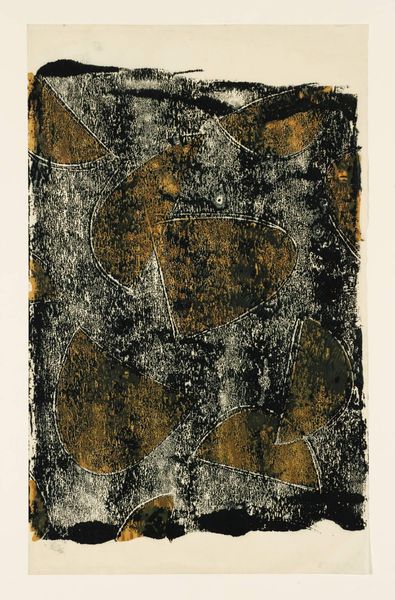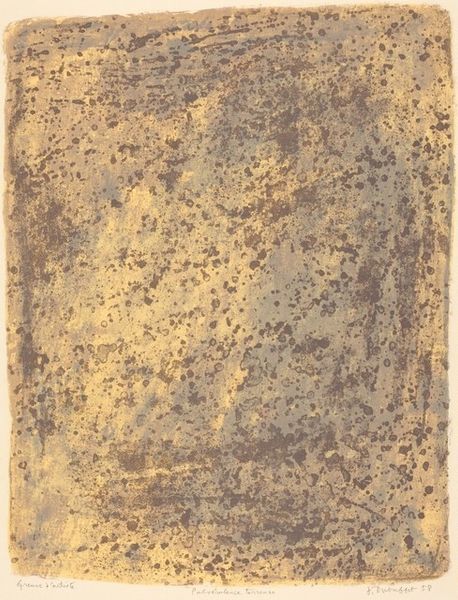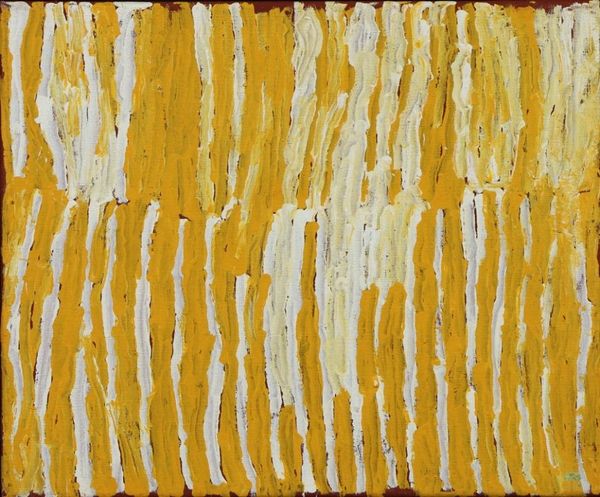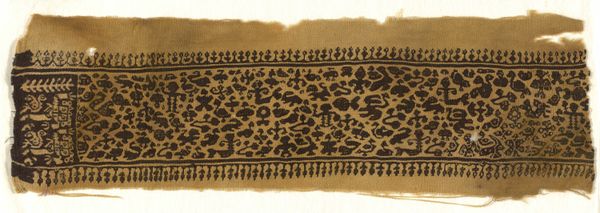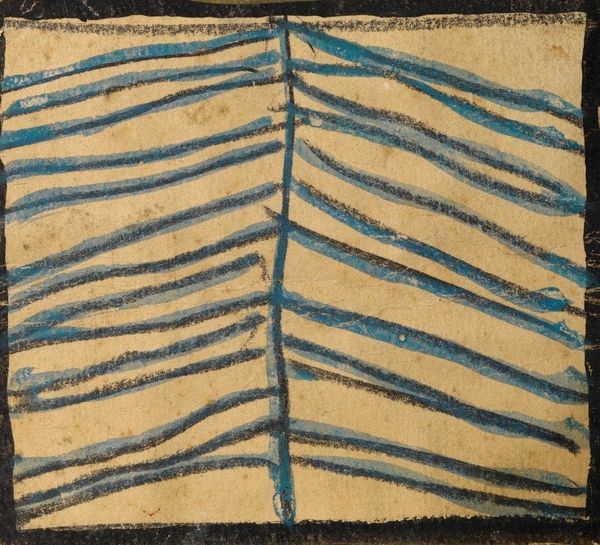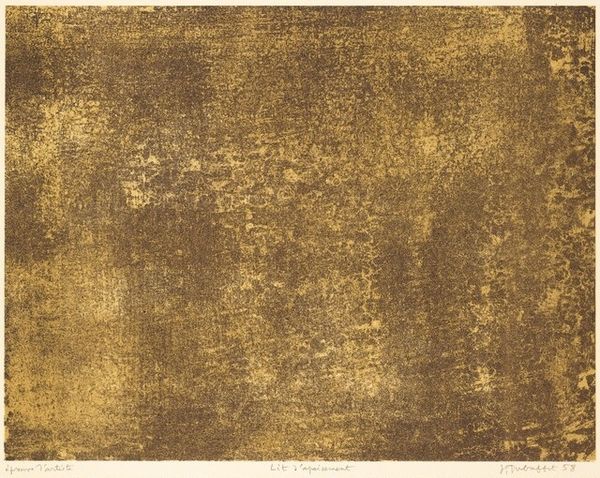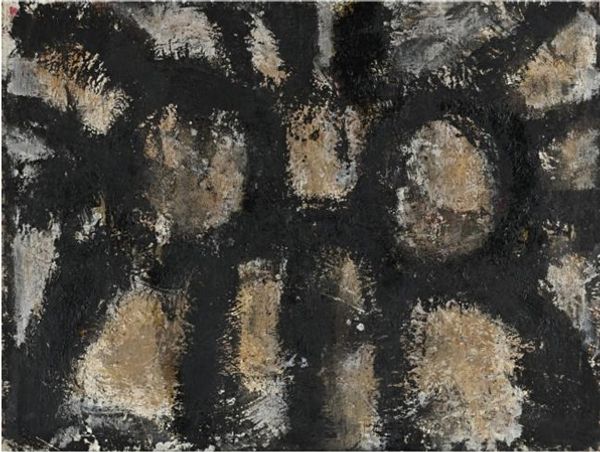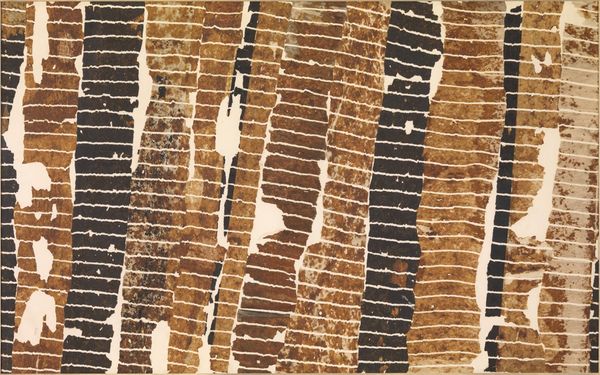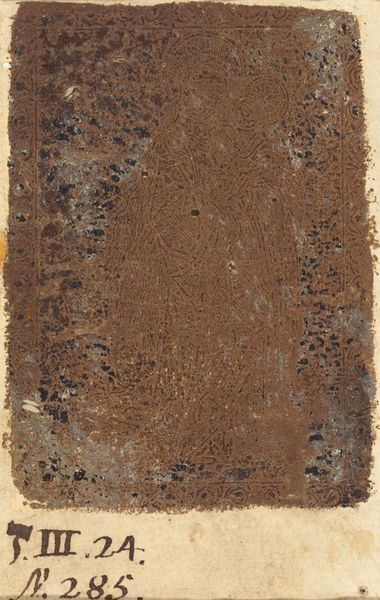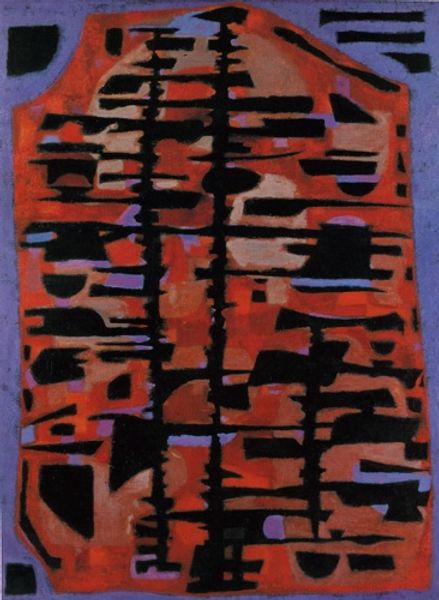
drawing, graphite
#
abstract-expressionism
#
drawing
#
abstract expressionism
#
organic
#
organic pattern
#
abstraction
#
line
#
graphite
#
abstract art
Copyright: Se-Ok Suh,Fair Use
Curator: Looking at "Line Variation," a 1959 work on paper by Korean artist Se-Ok Suh, I’m immediately drawn to its deceptive simplicity. A series of vertical lines, starkly rendered in graphite, against a warm, textured background. What are your initial thoughts? Editor: It feels almost like a visual score, doesn’t it? The lines have a rhythm, a deliberate yet imperfect pattern. There’s something quite primal about the marks, like the earliest forms of writing, hinting at expression before codified language. Curator: Absolutely, and I think situating this piece within the broader context of post-war Korean art is critical. Think about the sociopolitical landscape at that time: a nation grappling with the aftermath of war, divided ideologies, and a search for identity. The perceived simplicity of these abstract gestures became a space for quiet contemplation, a refuge from the clamor of a society undergoing profound change. Editor: It speaks to a desire for connection to nature, to basic marks of existence in the aftermath of conflict. Are these marks declarations of individual self-hood against a backdrop of political tension and historical fragmentation? Curator: It’s possible, and there’s certainly an argument to be made for the artist's engagement with Abstract Expressionism. We see here an emphasis on process, the artist’s hand directly involved in the creation, that was quite a focus within that movement. However, Suh infuses it with his own Korean sensibility, the influence of calligraphy. Editor: I agree. You can trace that Eastern aesthetic influence that distinguishes the art work from solely Western form. Thinking about identity here – the piece also asks interesting questions about center and periphery. Whose perspectives are valorized by whom in museum culture, and whose expressive cultures may be at risk of misinterpretation within global contexts. Curator: These considerations, along with attention to materials – paper, graphite – that are accessible, available, create further conversations within broader narratives. Thank you for drawing them into this space. Editor: It feels more open when viewed that way, more responsive, more aligned to human experiences, and our dialogue really highlighted for me its contemporary relevance.
Comments
No comments
Be the first to comment and join the conversation on the ultimate creative platform.
